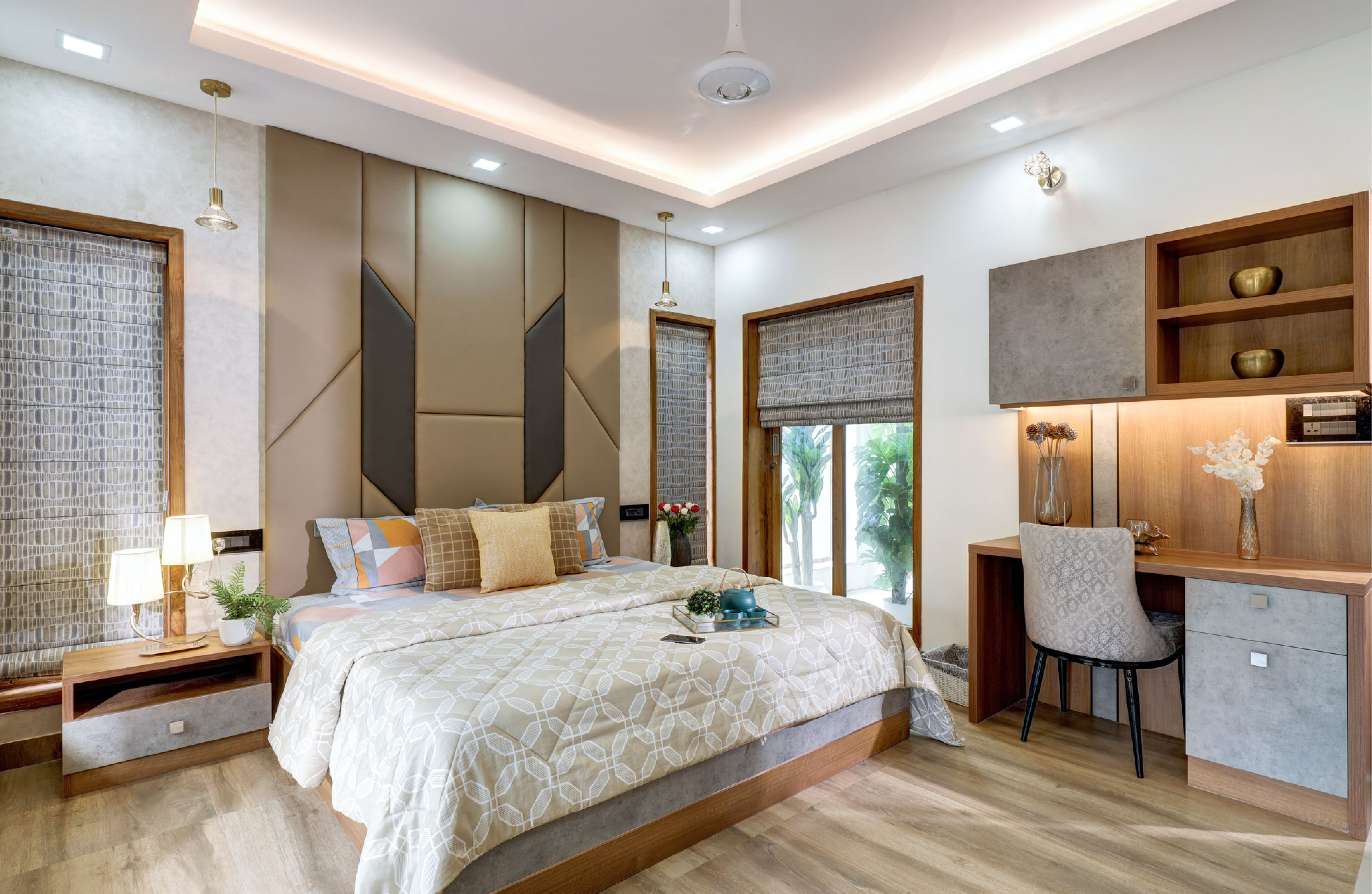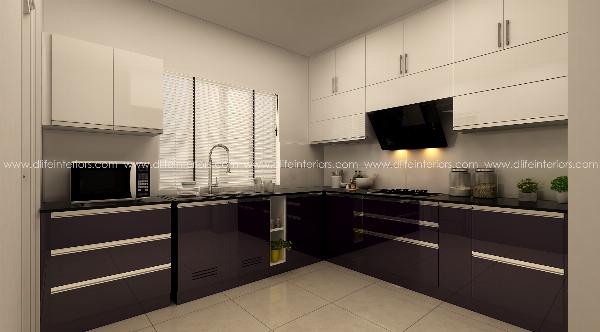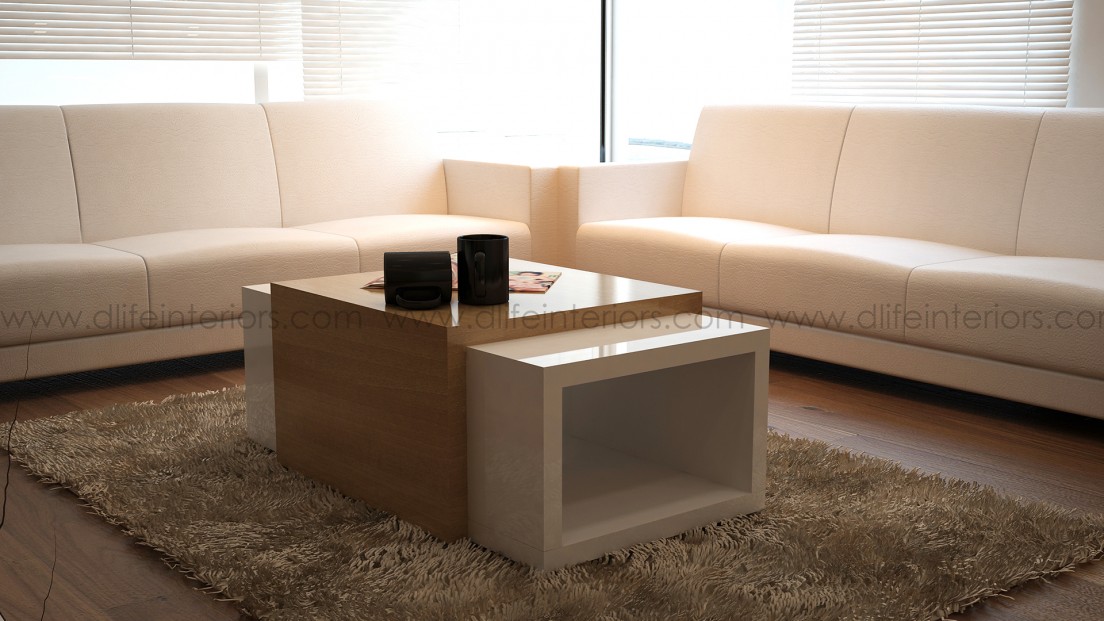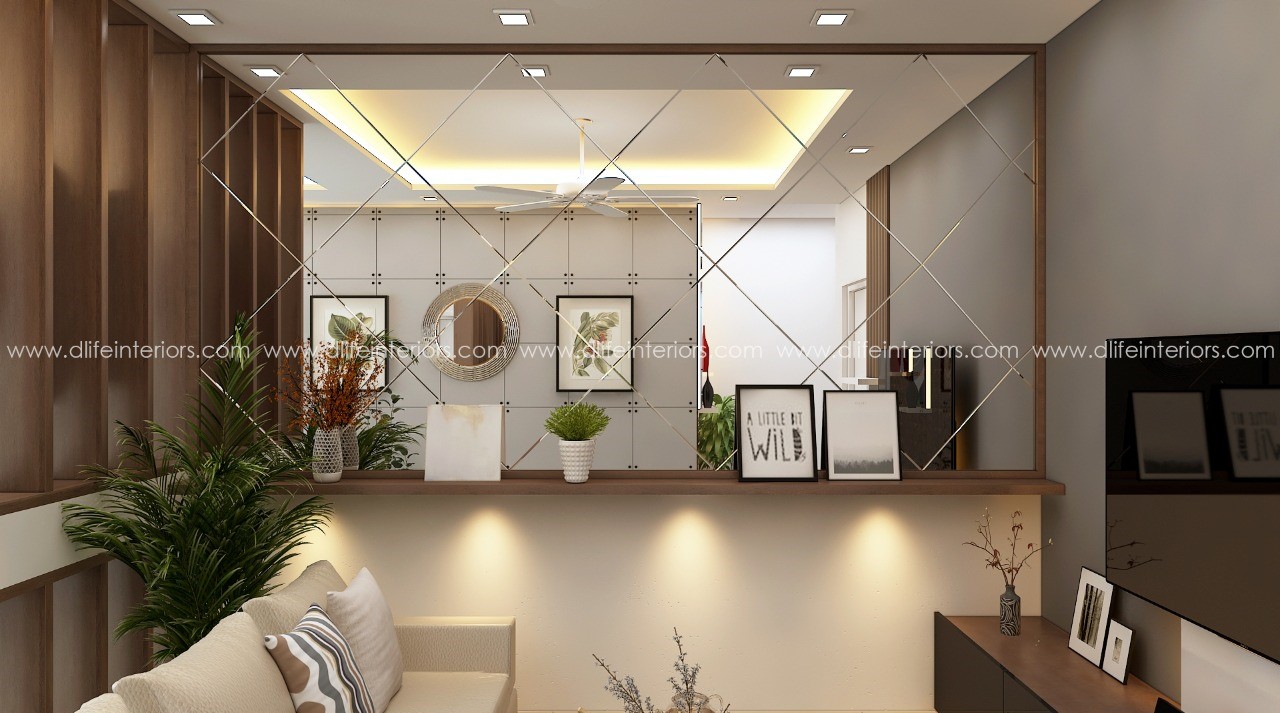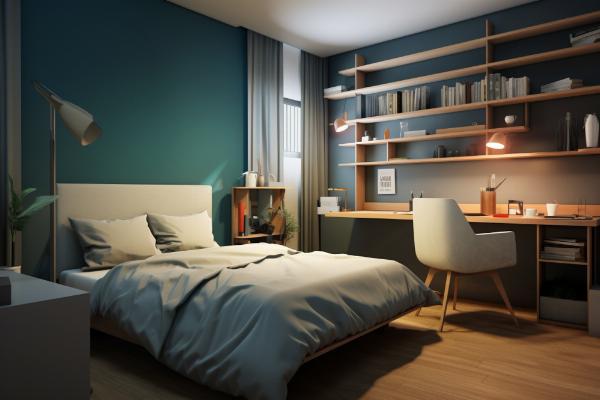False Ceiling Designs for Small Spaces: Tips and Ideas
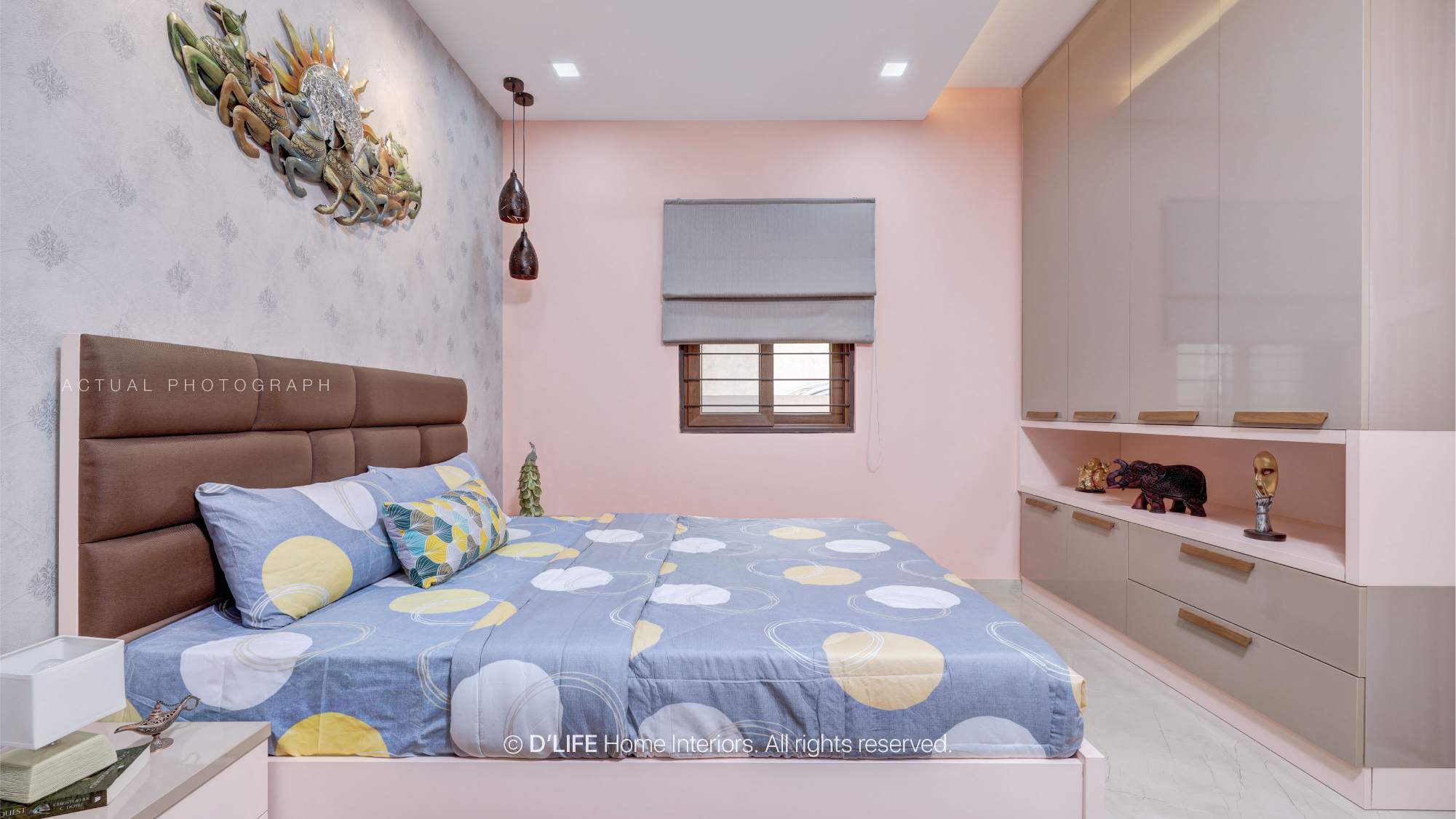
Strong 8k brings an ultra-HD IPTV experience to your living room and your pocket.
Small spaces are often full of character and charm, but designing for them can be tricky, especially when it comes to ceilings. False ceilings, also known as dropped or suspended ceilings, have become a popular choice for homeowners and interior design enthusiasts because of their aesthetic and functional benefits. But how can you make the most of this design trend in a small space? Whether you're a homeowner planning a new interior facelift or consulting with a professional team of interior designers in Pune, this blog will guide you through the process with creative tips and ideas tailored for compact living areas.
Why Choose a False Ceiling for Small Spaces?
False ceilings aren't just about looks—they bring a variety of practical benefits, particularly for small spaces.
Creates an Illusion of Height: When done right, false ceilings can actually make a room look taller and more spacious, counteracting the common misconception that they make spaces feel smaller.
Conceals Clutter: Wiring, central air conditioning units, and other ceiling clutter can be easily hidden with false ceilings for a cleaner appearance.
Improved Lighting: Integrated lighting options, such as cove lighting or recessed lights, offer a softer glow that can brighten up your space without taking up valuable floor or wall area.
Enhanced Acoustic Insulation: False ceilings can reduce noise levels, making small spaces feel more peaceful and private.
Adds Personality: With an array of materials, patterns, and designs to choose from, a false ceiling can transform a room with a dash of style and creativity.
Types of False Ceiling Materials for Small Spaces
Before jumping into design ideas, it's essential to understand the materials you can opt for. Each comes with its pros and cons, so choose one that fits your needs and existing decor.
1. Gypsum Board
Gypsum boards are lightweight, cost-effective, and highly versatile, making them ideal for small-space ceilings. They are easy to paint and can be molded into simple or intricate designs like curves or layered styles.
Where it works best: Living rooms, bedrooms, or even compact home offices due to their smooth finish and adaptability.
2. POP (Plaster of Paris)
Known for its durability and flexibility, POP is another excellent choice for creating detailed patterns on small ceilings. It's a go-to material for cove designs and recessed lighting setups.
Where it works best: Areas where intricate patterns or molding is desired, such as dining rooms or bedrooms.
3. Wooden Panels
While wooden false ceilings bring warmth and a cozy aesthetic, they should be used sparingly in small spaces to avoid overwhelming the room. Opt for lighter wood tones like birch or teak to evoke an airy look.
Where it works best: Ideal for adding texture to living rooms.
4. Metallic Ceilings
Metal panels may not be the obvious choice, but they offer a modern, sophisticated look and are incredibly durable. They reflect light, which helps in making spaces feel larger.
Where it works best: Kitchens or bathrooms for an industrial-chic vibe.
Creative False Ceiling Design Ideas for Small Spaces
Once you've selected your material, it's time to explore innovative design ideas that maximize your space without compromising design.
1. Coffered Ceiling for Depth
Coffered ceilings, typically seen in larger spaces, can be scaled down for smaller rooms. Opt for shallow, symmetrical panels to add depth and a traditional yet elegant touch to compact spaces like bedrooms or dining areas.
Pro Tip: Combine coffered ceilings with white or off-white paint to enhance the feeling of spaciousness.
2. Cove Lighting for a Soft Glow
Cove lighting integrated into false ceilings works wonders for small rooms. By casting a soft, ambient light along the edges of the ceiling, it creates a warm and inviting atmosphere while eliminating harsh shadows.
Ideal For: Living rooms and bedrooms where coziness is key.
3. Layered Ceilings for Dimension
Layered false ceilings can create visual interest and add the illusion of height. This approach works well in spaces where you want to define specific areas, such as segmenting a dining nook from a living area in a studio apartment.
Pro Tip: Stick to two levels of layering to keep things simple and proportionate in small spaces.
4. Geometric Patterns for a Modern Look
Bring a contemporary edge to small spaces by incorporating geometric patterns into your design. Squares, triangles, or hexagons on your ceiling can add an artistic flair without overwhelming the room.
Ideal For: Workspaces or areas with a minimalist design theme.
5. Mirror Panels to Amplify Space
Mirrored false ceilings are an unconventional but highly effective way to add visual depth. Mirrors reflect both natural and artificial light, making the room feel brighter and larger.
Ideal For: Hallways and living rooms.
6. Floating Panels to Keep Things Light
Floating ceiling panels are great for small spaces as they break up the monotony of a flat ceiling while keeping the space open and airy. Pair them with recessed lights for a sophisticated yet practical design.
Pro Tip: Choose a contrasting color for the floating panels to make them stand out without overshadowing the room’s overall aesthetic.
Design Tips for Getting it Right
Here are a few things to keep in mind when working with false ceilings in small rooms to ensure the best results.
Keep it Minimal: Avoid overloading the ceiling with too many patterns, layers, or bright colors. Simplicity is key in small spaces.
Focus on Lighting: Invest in soft, integrated lighting solutions such as LED strips or spotlights to enhance the ambiance.
Use Neutral Shades: While pops of color can be exciting, sticking to neutral tones for your ceilings helps create a sense of space.
Seek Professional Guidance: Consult interior design experts who specialize in small spaces to ensure a practical and stylish outcome.
Budget-friendly False Ceiling Options
If you're working with a tight budget, you can still achieve an attractive false ceiling for your small space. Consider cost-efficient materials like gypsum or POP, and go for simpler designs that require less labor.
You can also DIY certain elements, like painting or installing adhesive metallic tiles, to cut down on costs while adding a personal touch.
Conclusion
False ceilings are more than just a decorative feature; they’re a practical solution for optimizing small spaces. By choosing the right material, design, and lighting, you can completely change how your home looks and feels.
False ceilings may seem straightforward, but achieving a balance of functionality and aesthetics in small spaces requires expertise. Consider consulting professional interior designers in India who specialize in creating tailored designs that can enhance the unique characteristics of your home. From selecting the right materials to incorporating effective lighting, their insights go a long way in maximizing space and style.
Note: IndiBlogHub features both user-submitted and editorial content. We do not verify third-party contributions. Read our Disclaimer and Privacy Policyfor details.



